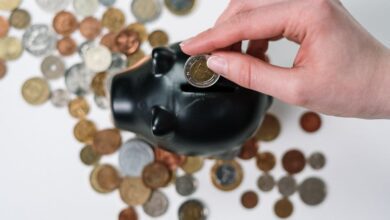Metals in the Modern Economy: Trends, Investments, and Sustainability

In an increasingly interconnected global economy, the dynamics of metal markets play a pivotal role in shaping both industrial performance and investment strategies. From the dual nature of silver, which serves as both a crucial industrial component and a popular investment asset, to the fluctuations in copper prices that often mirror the health of the global economy, the significance of metals cannot be understated. As nations pivot towards sustainable practices, the demand for rare earth metals has surged, driven by advancements in green energy technologies. Meanwhile, the debate between platinum and palladium as investment options continues to unfold, reflecting varying market sentiments. Additionally, metals are recognized for their potential to diversify investment portfolios, particularly in times of inflation, which can significantly impact the prices of both precious and industrial metals. Looking ahead, the future of aluminum in a sustainable economy, alongside the implications of mining regulations on metal prices, offers further insights into this complex landscape. This article delves into these critical topics, exploring how the interplay of demand, investment, and regulatory environments shapes the metal markets today and into the future.
- 1. "Silver's Dual Impact: Navigating Industrial Uses and Investment Trends"
- 2. "Copper Prices as Economic Barometers: Insights into Global Markets"
1. "Silver's Dual Impact: Navigating Industrial Uses and Investment Trends"
Silver has long been recognized for its unique properties, which position it as both a crucial industrial commodity and a popular investment asset. Its dual role stems from its exceptional conductivity, antimicrobial characteristics, and reflective abilities, making it indispensable in various industries, including electronics, solar energy, and healthcare. As the demand for advanced technologies continues to grow, particularly in the renewable energy sector, silver's industrial applications are expanding. For instance, the rise of solar photovoltaic cells has significantly increased silver consumption, as these cells rely on the metal for efficient energy conversion.
On the investment side, silver is often viewed as a safe haven asset, akin to gold, particularly during times of economic uncertainty or inflation. Investors typically turn to silver to hedge against market volatility and currency fluctuations. This dual nature creates a complex relationship between industrial demand and investment trends. When economic conditions are strong, industrial demand may drive prices higher; conversely, during downturns, investment demand can surge as market participants seek refuge in tangible assets.
Moreover, the interplay between these two aspects of silver can lead to price volatility. For example, if industrial demand rises sharply due to technological advancements, it can bolster investment interest, pushing prices up. However, a significant decline in industrial activity, such as during a recession, may dampen demand and lead to price corrections. Understanding these dynamics is crucial for investors and industry stakeholders alike, as they navigate the evolving landscape of silver's market role. Overall, silver's dual impact reflects broader economic trends and highlights its significance in both industrial applications and investment strategies.
Silver plays a dual role in both industrial applications and investment markets, making it a unique asset. In industry, silver is essential due to its excellent conductivity, thermal properties, and antimicrobial qualities. It is widely used in electronics, solar panels, and medical devices, driving demand in sectors that are poised for growth, particularly as technology advances. On the investment side, silver is often viewed as a safe haven during economic uncertainty, much like gold. Investors are attracted to silver’s potential for appreciation and its role as a hedge against inflation and currency fluctuations.
Copper prices serve as a barometer for global economic health, reflecting demand in construction, manufacturing, and electrical industries. Fluctuations in copper prices often correlate with economic indicators; rising prices may signal growth and increased demand, while declines can indicate economic slowdowns. As a fundamental metal in green technologies, copper is crucial for electric vehicles and renewable energy systems, further intertwining its price with the health of the global economy.
The impact of green energy technologies on demand for rare earth metals is significant. As the world shifts towards sustainable energy solutions, the need for rare earth metals, which are critical in producing batteries, magnets, and catalysts, is expected to surge. This increased demand could lead to supply constraints, as rare earth metals are concentrated in a few regions, leading to potential price volatility.
When comparing platinum and palladium as investment options, several factors come into play. Platinum, traditionally valued for its use in jewelry and catalytic converters, has seen fluctuating demand due to the rise of palladium in automotive applications. While palladium has outperformed platinum in recent years, driven by stringent emissions regulations, investors must consider long-term market trends and industrial uses of both metals.
Metals play a critical role in diversifying investment portfolios. Precious metals like gold, silver, platinum, and palladium can provide a hedge against inflation and economic instability, while industrial metals such as copper and aluminum offer growth potential linked to economic expansion. A well-diversified portfolio that includes a mix of these metals can help mitigate risks associated with market volatility.
Inflation significantly impacts the prices of both precious and industrial metals. As inflation rises, the purchasing power of currency decreases, often leading investors to seek tangible assets like metals to preserve wealth. This increased demand can drive prices higher, creating a complex relationship between inflation rates and metal valuations.
Looking ahead, aluminum is positioned to play a pivotal role in a sustainable economy. With its lightweight properties and recyclability, aluminum is increasingly favored in various industries, including automotive and construction. The push for sustainability is driving innovations in aluminum production, enhancing its appeal as a green material.
Finally, mining regulations can have a profound effect on metal prices. Stricter environmental and labor regulations can increase production costs and limit supply, leading to higher prices. Conversely, favorable regulations may enhance production capabilities and stabilize prices. The balance between regulation and market dynamics is crucial in determining the future of metal prices in the global economy.
2. "Copper Prices as Economic Barometers: Insights into Global Markets"
Copper prices have long been considered a reliable indicator of global economic health, often referred to as "Dr. Copper" due to its ability to predict economic trends. As a key component in construction, electronics, and manufacturing, copper's demand is closely tied to industrial activity. When economies are thriving, particularly in emerging markets like China and India, the demand for copper tends to rise, driving prices upwards. Conversely, during economic downturns or periods of uncertainty, demand diminishes, leading to lower prices.
The relationship between copper prices and economic performance is evident in several key indicators. For example, strong construction activity typically correlates with higher copper prices, as the metal is essential for wiring, plumbing, and various structural applications. Similarly, a surge in manufacturing output can boost demand for copper, particularly in sectors such as automotive and electronics, further influencing price trends.
Market analysts closely monitor copper price fluctuations as they can signal shifts in economic confidence. A consistent rise in copper prices can indicate robust economic growth and increasing industrial production, while declining prices may suggest weakening demand and potential recessionary trends. Additionally, geopolitical factors can also impact prices, as trade tensions or supply chain disruptions can create uncertainty in the copper market.
Overall, copper serves as a vital barometer for economic health, reflecting broader trends in global markets and providing valuable insights for investors and policymakers alike. Understanding these dynamics can help stakeholders make informed decisions in both industrial and investment contexts.
In conclusion, the intricate interplay between metals and their roles in both industrial applications and investment landscapes reveals a complex yet vital aspect of the global economy. Silver, with its unique position as both an industrial workhorse and a favored investment asset, exemplifies how market dynamics can shift in response to technological advancements and economic conditions. Similarly, copper prices serve as a telling indicator of global economic health, reflecting trends that can influence investor confidence and market stability.
As we shift towards a greener future, the rising demand for rare earth metals underscores the importance of these materials in driving sustainable technologies. The ongoing debate between platinum and palladium highlights the need for investors to carefully assess market trends and supply chain realities to make informed decisions. Furthermore, metals play a crucial role in diversifying investment portfolios, offering a hedge against inflation and economic uncertainty, which are increasingly relevant in today's financial climate.
The future of aluminum, particularly in a sustainable economy, is promising, yet it is also shaped by regulatory frameworks that govern mining practices and environmental impacts. As global demand for metals continues to evolve, understanding the nuances of each metal's market dynamics is essential for investors, policymakers, and industry leaders alike. Ultimately, staying informed about these trends will be key to navigating the complexities of the metal markets and harnessing their potential for both economic growth and investment success.





